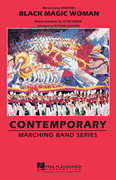Search Results for: “peter green”
Loading...
Black Magic Woman View 35 Products
I Don't Care View 25 Products
Albatross View 14 Products
Stay The Night View 12 Products
The Green Manalishi View 9 Products
Oh Well Part 1 View 8 Products
Just Like You View 6 Products
It's A Boy View 6 Products
Don't Let Go View 6 Products
Man Of The World View 6 Products
A Fool No More View 4 Products
Wasted View 4 Products
Rattlesnake Shake View 3 Products
The Supernatural View 3 Products
Underway View 3 Products
Showbiz Blues View 2 Products
Long Grey Mare View 2 Products
Hanging Around View 2 Products
Oh Well View 1 Product
Oh, My Green Grapes View 1 Product
Slabo Day View 1 Product



